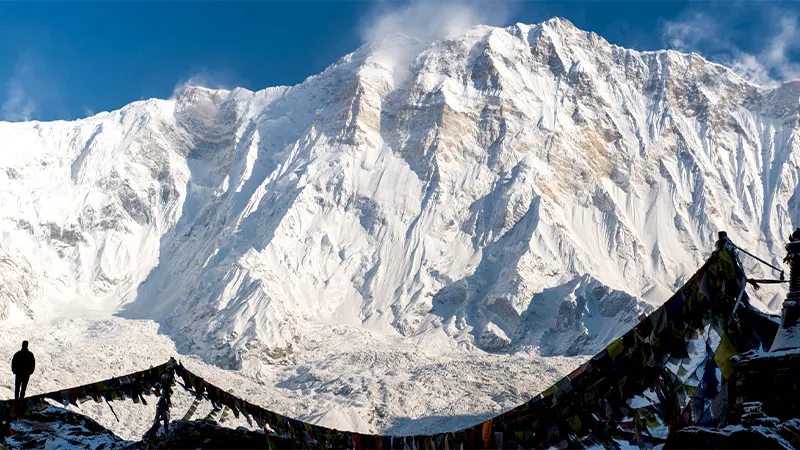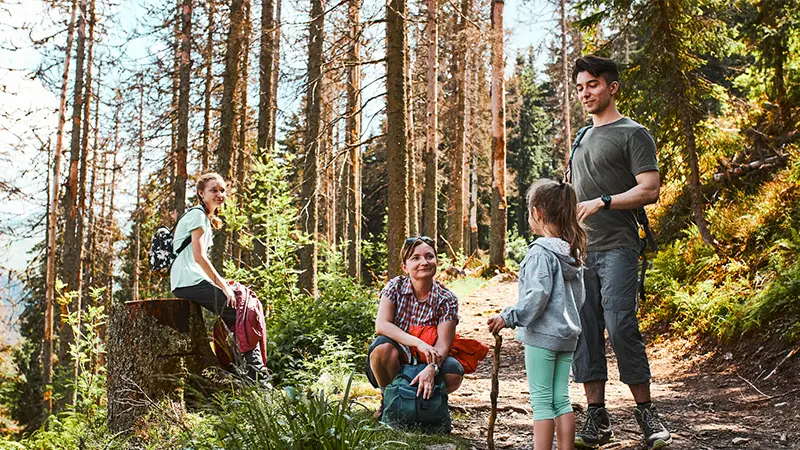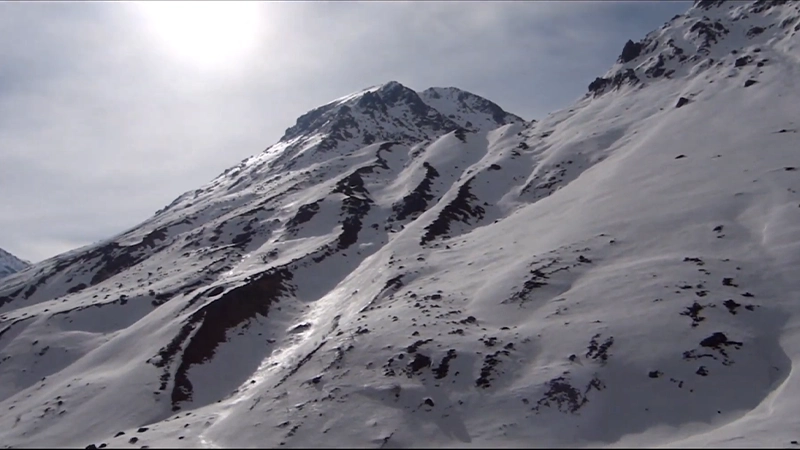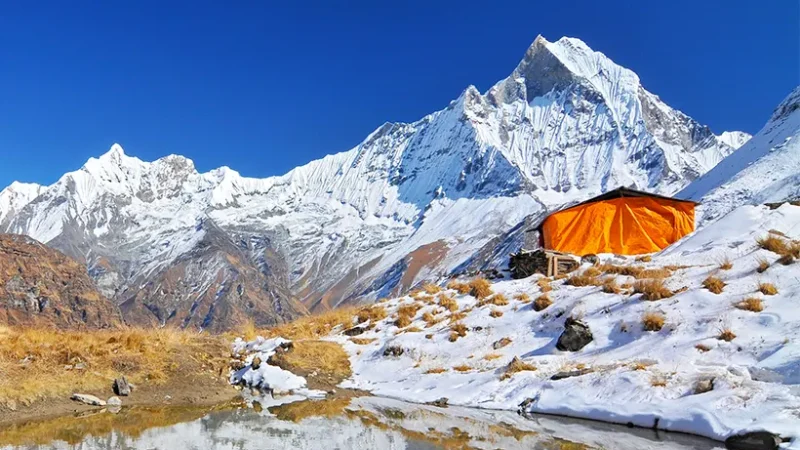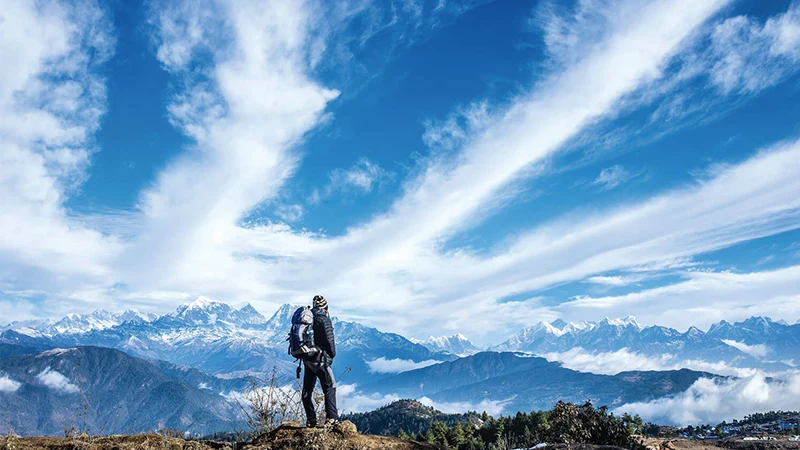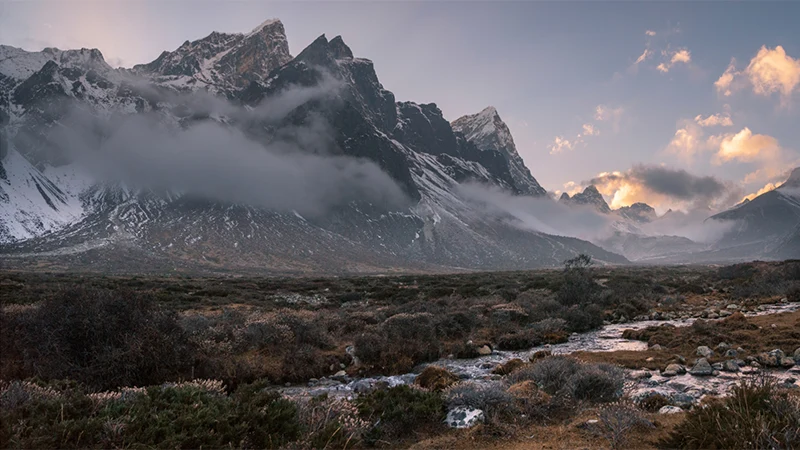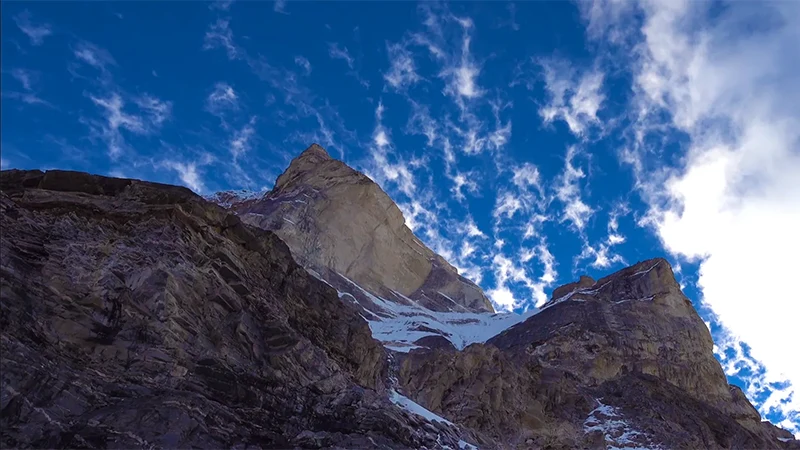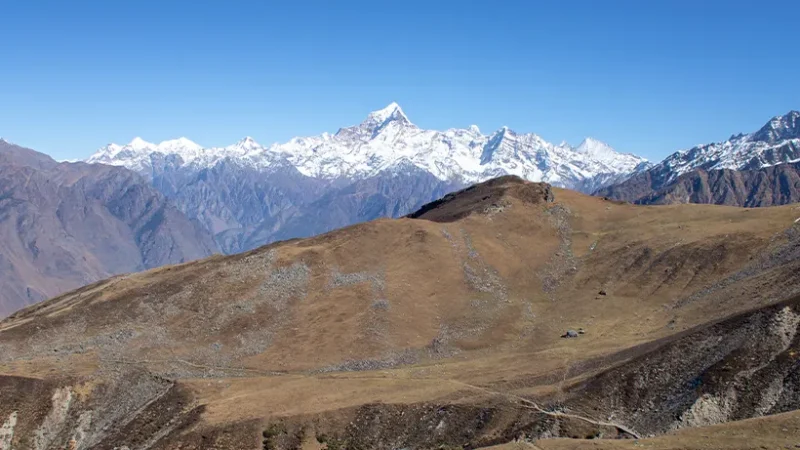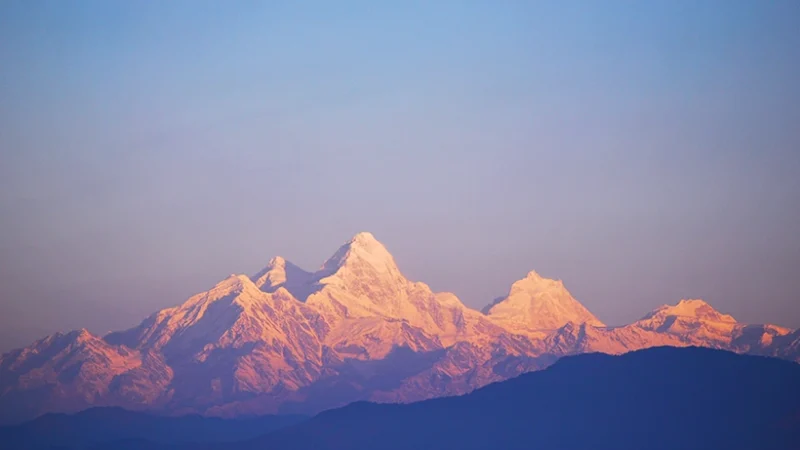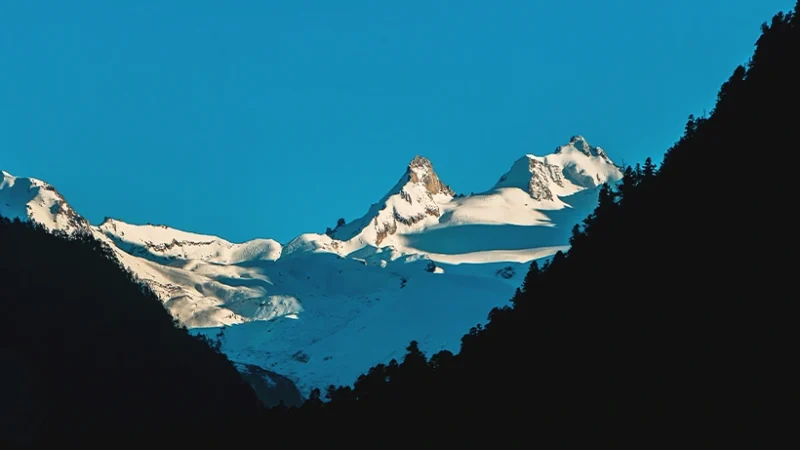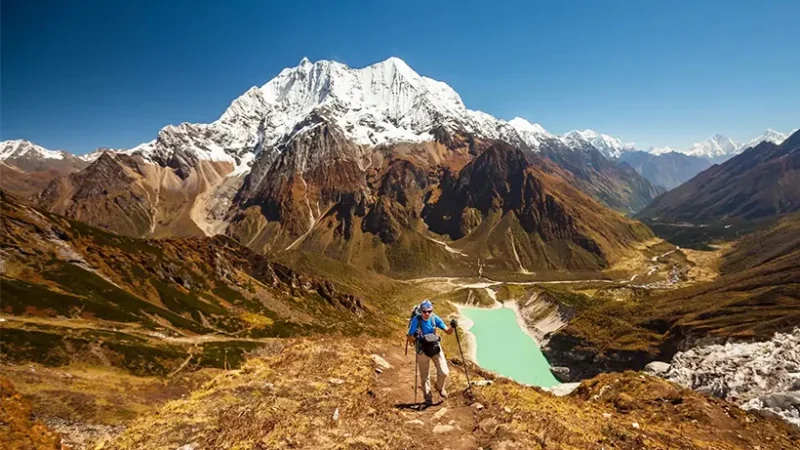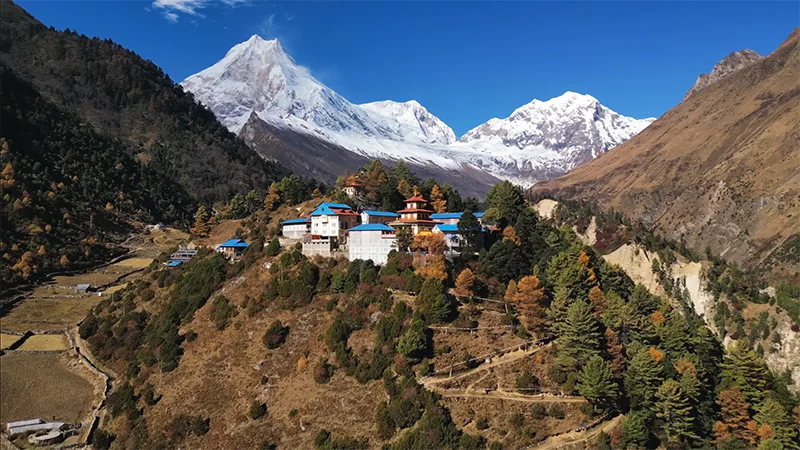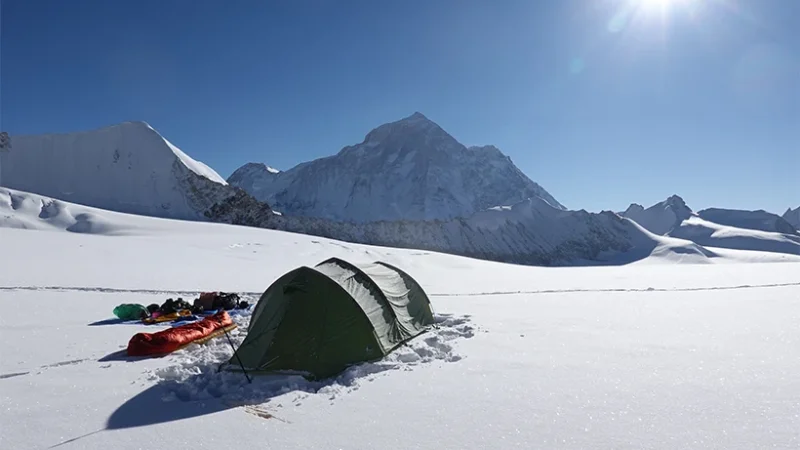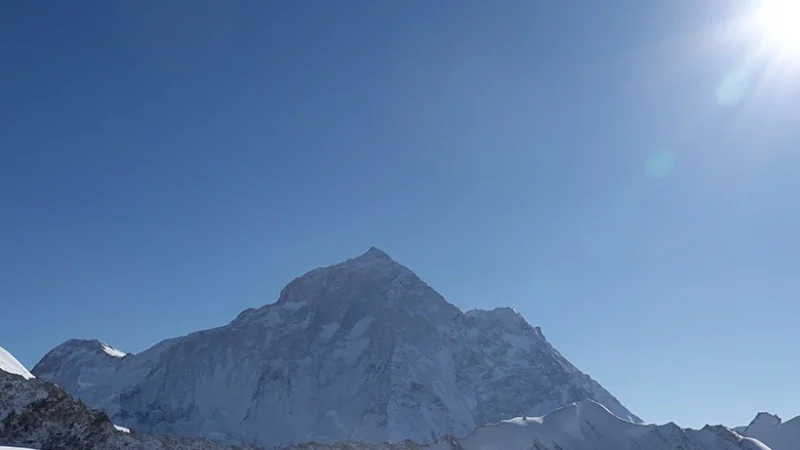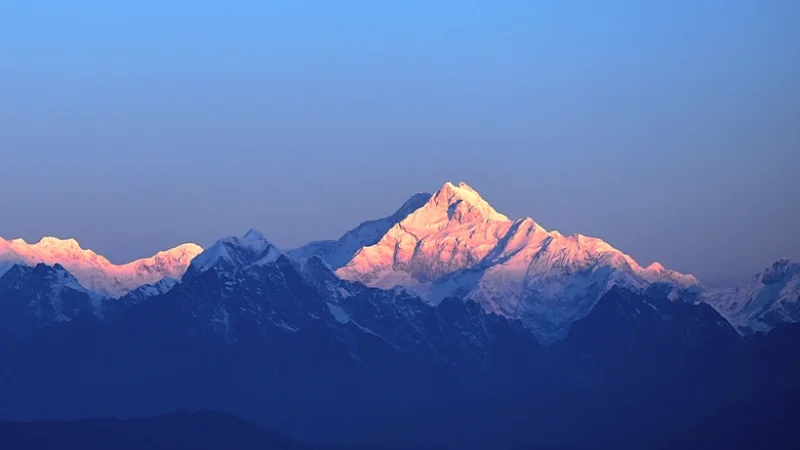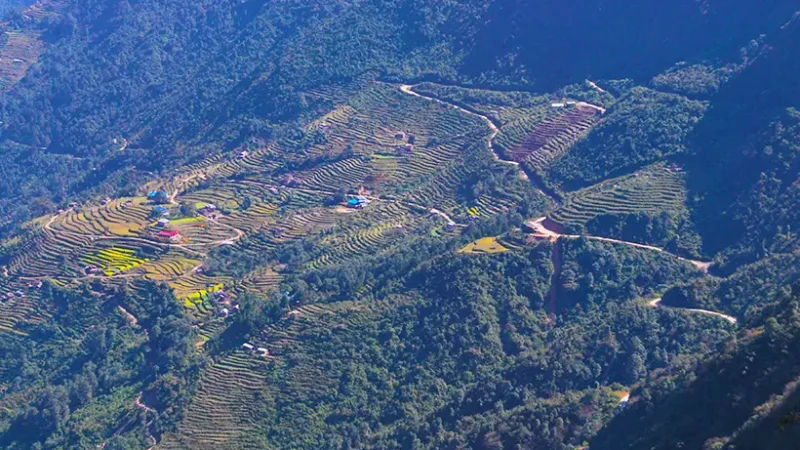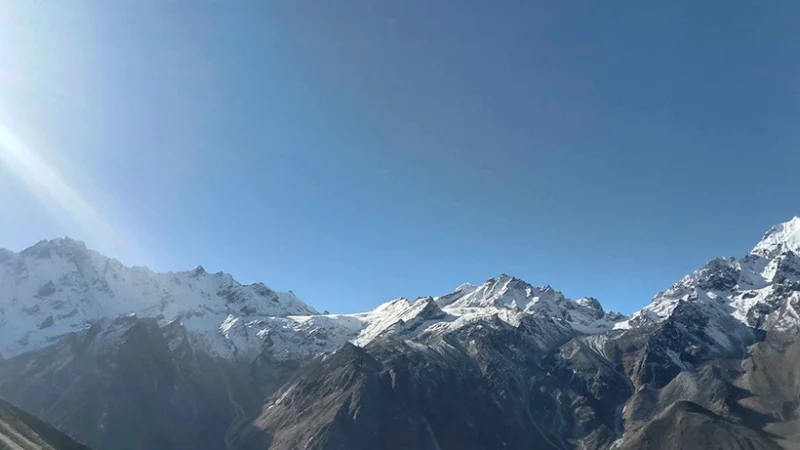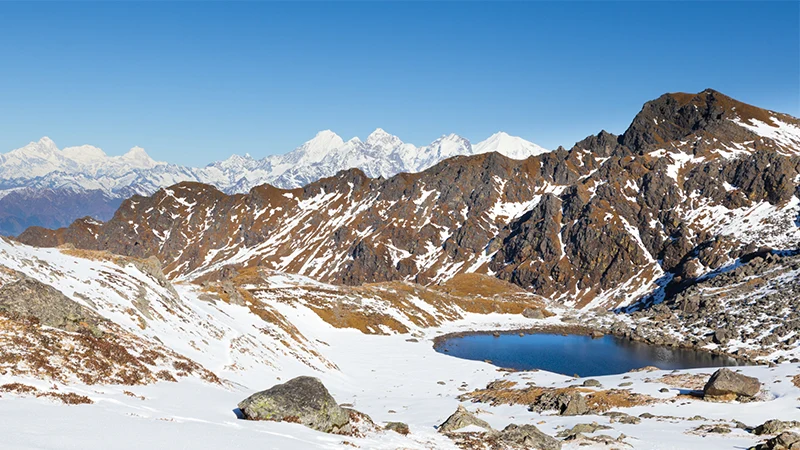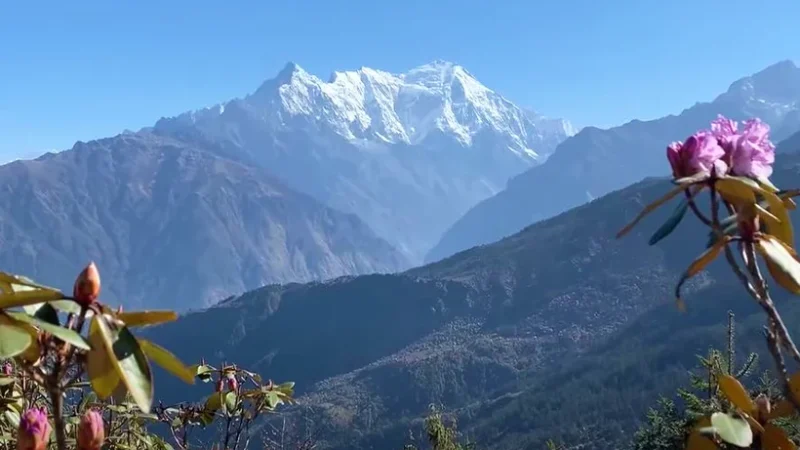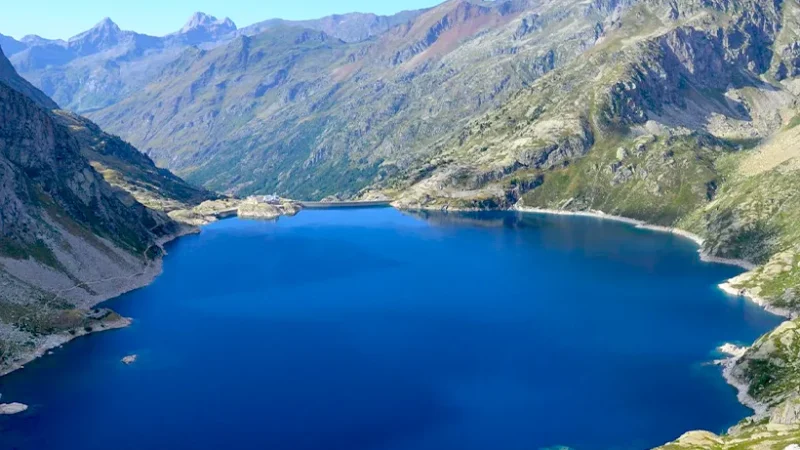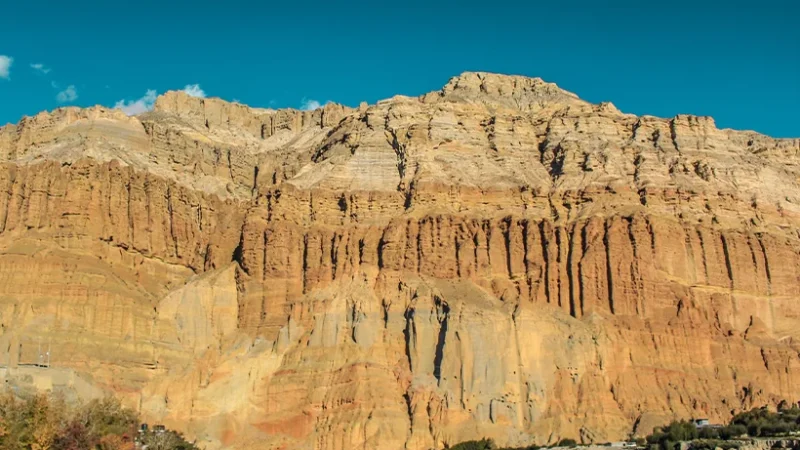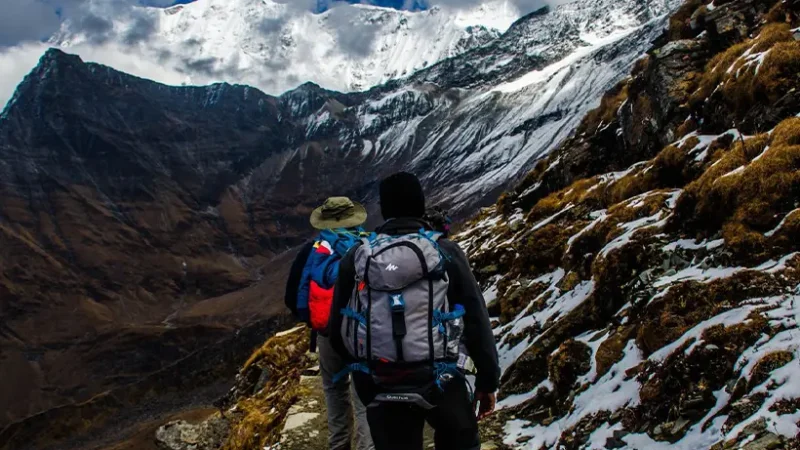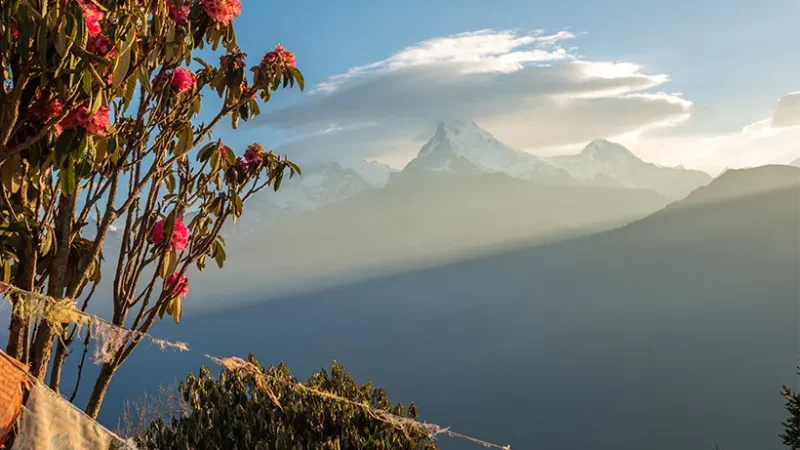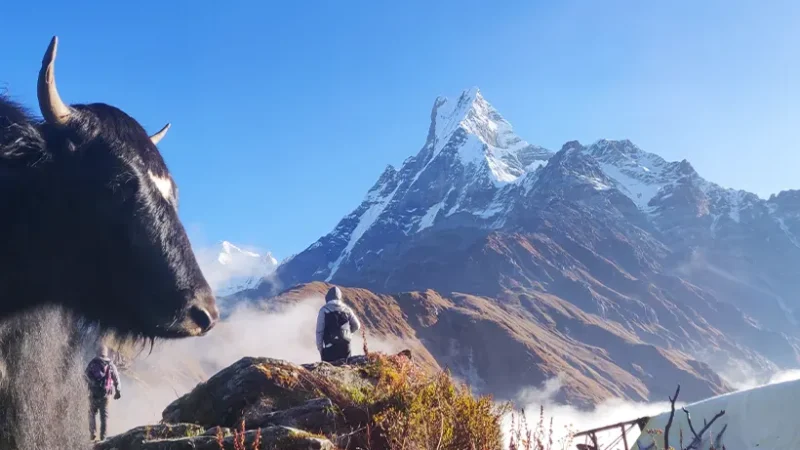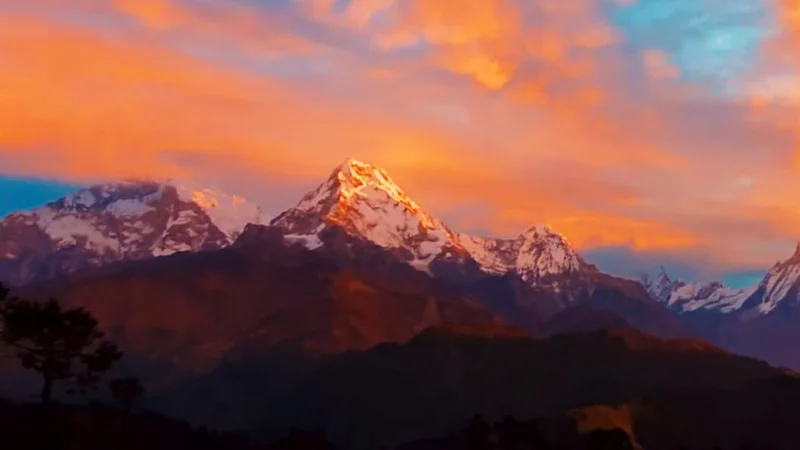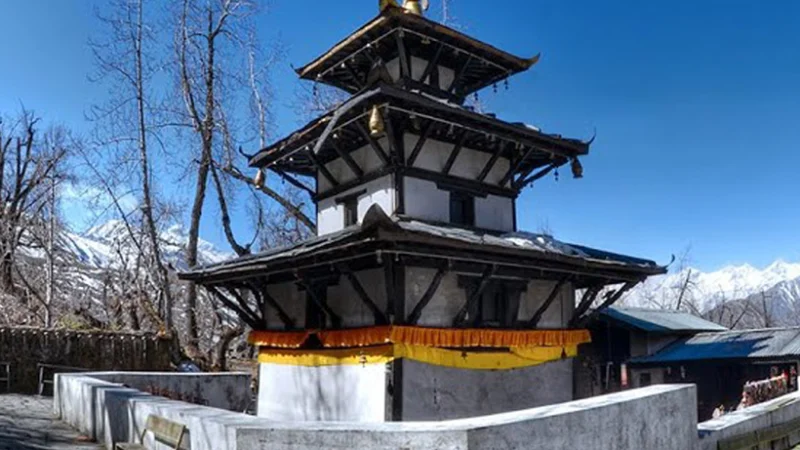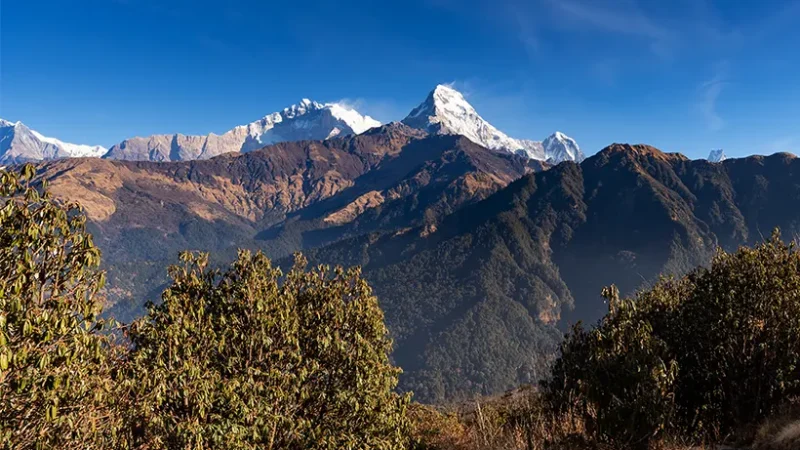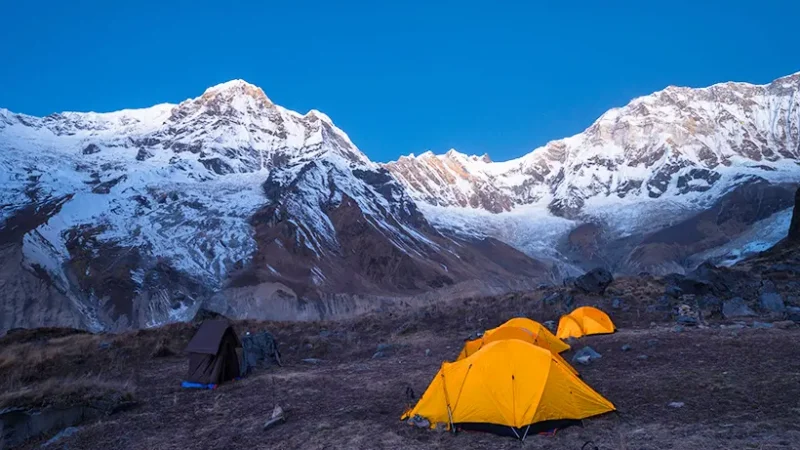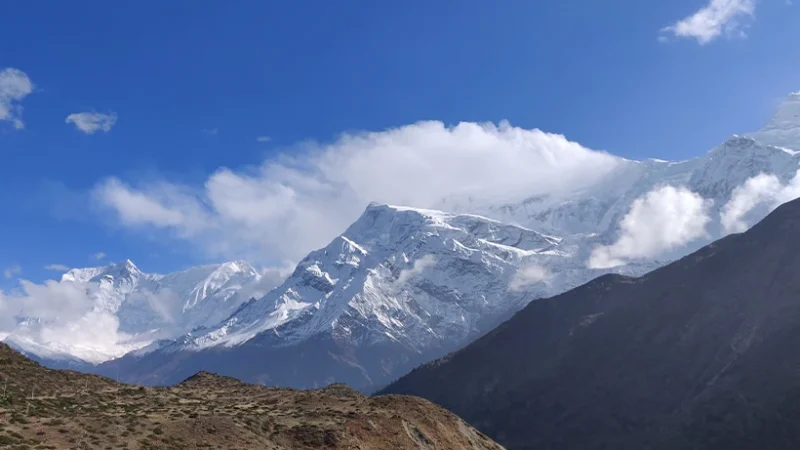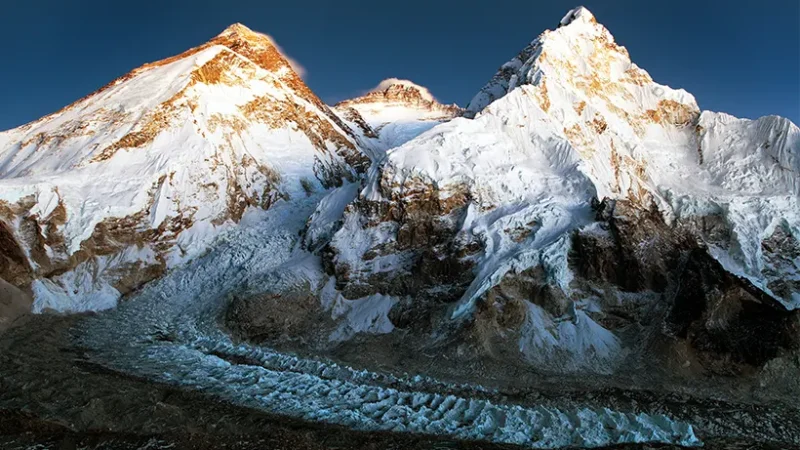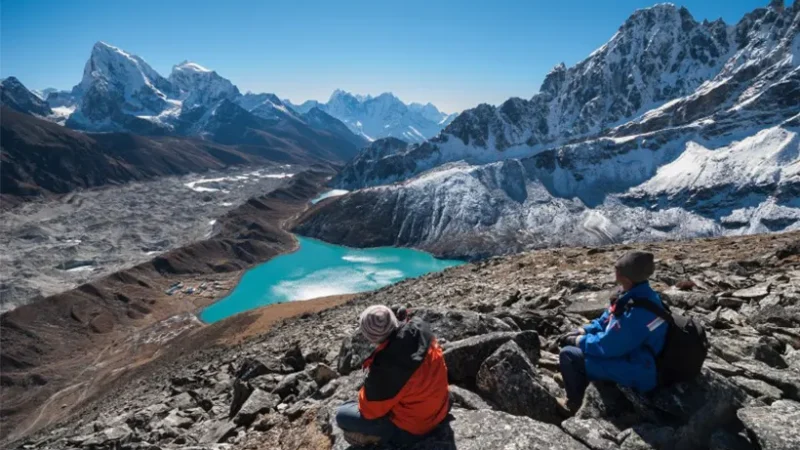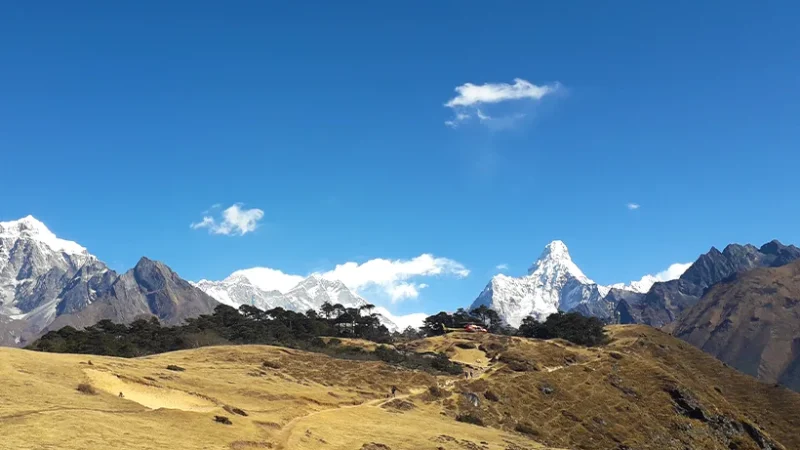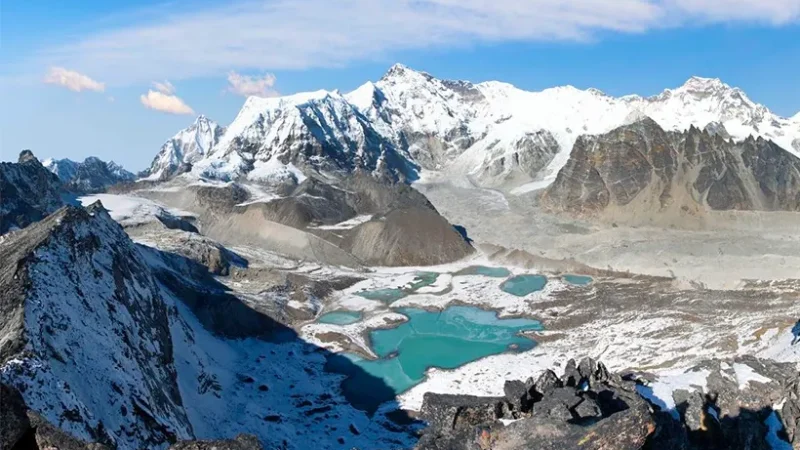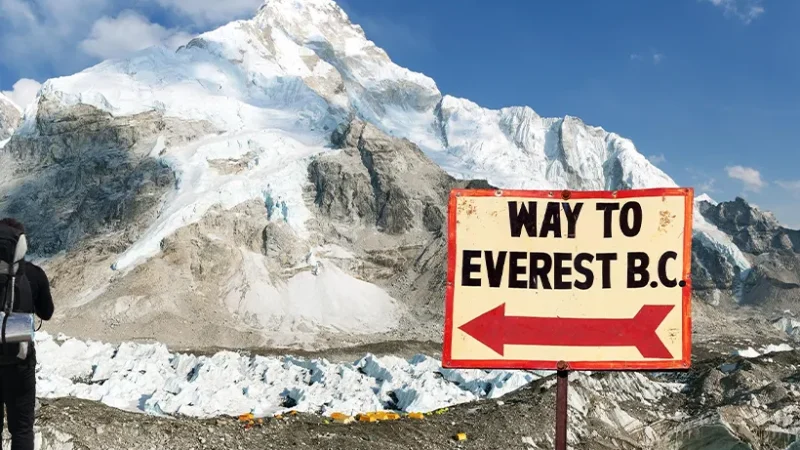Nepal is nestled in the heart of the Himalayas and owns some of the world’s most breathtaking landscapes. Nepal offers the best trekking experience with towering peaks, lush valleys, and diverse terrain.
The allure of Nepal lies in its unparalleled natural beauty. From the majestic Mount Everest to the Annapurna region’s tranquil lakes and rhododendron forests, the country’s scenery is nothing short of awe-inspiring.
Moreover, Nepal’s rich cultural diversity adds another layer of attraction to the trekking experience. Trekkers can encounter remote mountain villages inhabited by diverse ethnic groups during the trek. You will also get to experience diverse traditions, customs, and warm hospitality in local teahouses.
About Nepal Trekking Holidays for 2024/25
One of the best reasons that Nepal stands out as a trekker’s paradise is the diverse variety of trekking routes. Whether you are seeking a challenging adventure or an easy hike for beginners, there is something for everyone. From iconic routes like the Everest Base Camp Trek and the Annapurna Circuit to lesser-known gems like the Tsum Valley or Limi Valley, the options are endless.
Additionally, Nepal’s well-established trekking infrastructure makes it relatively accessible for adventurers of all backgrounds. Teahouses along the popular trekking routes provide comfortable lodging and hearty meals. Experienced guides and porters are always ready to assist you in every step to make your trip successful.
Nepal’s unique combination of natural beauty, cultural richness, and trekking infrastructure makes the country an unparalleled destination for anyone seeking an unforgettable holiday adventure. Nepal promises an experience that will leave you in awe and longing to return.
Best ways to choose where to trek in Nepal
Nepal is the playground with its majestic Himalayan peaks, lush valleys, and vibrant culture. But with so many trails to choose from, how do you decide which trek is right for you? Fear not, we will navigate the diverse landscapes and options to help you choose the perfect trekking experience in Nepal.
First, consider your fitness level and trekking experience. Nepal offers treks ranging from easy walks through scenic valleys to challenging ascents to high-altitude passes. If you are new to trekking or prefer a more leisurely pace, lower-altitude treks like the Ghorepani Poon Hill trek or the Mardi trek. These routes offer stunning views without the demands of high altitude or strenuous climbs.
On the other hand, if you are an experienced trekker seeking a challenge, consider tackling one of Nepal’s famous high-altitude treks. It includes the Everest Base Camp trek, Annapurna Circuit, Dhaulagiri Circuit or Kanchenjunga Circuit Trek. These treks involve longer durations, higher altitudes, and more demanding terrain. But the rewards are unparalleled panoramic views and a sense of accomplishment like no other.
Next, consider the time of year. Nepal’s trekking seasons are dictated by the monsoon and winter seasons. The best time to trek in Nepal is spring (March to May) and autumn (September to November). The weather is clear, and the skies are blue during these seasons. The trails are alive with blooming rhododendrons and vibrant landscapes.
Another crucial factor to consider is the cultural experience you desire. Nepal is not only blessed with natural beauty but also rich in cultures and traditions. Each trekking region offers its unique blend of ethnic communities, ancient monasteries, and traditional villages. If immersing yourself in local culture is a priority, consider treks like the Upper Mustang Trek or Tiji Festival Trek where you can explore the ancient kingdom of Lo. Also, there is Manaslu Tsum Circuit trek, which takes you through remote Tibetan villages.
Furthermore, think about the logistics of your trek. Some treks, like the Annapurna Circuit, and Everest Luxury Lodge Trek offer the best teahouse accommodation along the trail.
In conclusion, choosing where to trek in Nepal is a deeply personal decision. Your decision should depend on various factors such as fitness level, experience, season, cultural preferences, and logistics. By considering these factors and doing thorough research, you can start an unforgettable journey. So lace up your boots, pack your sense of adventure, and get ready to explore the roof of the world!
Preparing for Your Trek
If you are willing to ensure a safe and enjoyable experience, then enough preparation is key. Below, we have listed the guide to help you get ready for your journey to the Nepal Himalayas.
Gear and Equipment
Packing the right gear and equipment is very important for a successful trek in Nepal’s rugged terrain. Pack comfortable hiking boots, moisture-wicking clothing, and a durable backpack. Layering is key to adapting to changing temperatures, so bring along lightweight, breathable layers that you can add or remove as needed. Additionally, pack high-energy snacks and plenty of water to keep you fueled and hydrated
throughout your journey
Physical Fitness and Altitude Acclimatization
Physical fitness is essential for trekking in Nepal. You are going to encounter steep ascents, rocky terrain, and high altitudes during your trekking holiday. Focus on building endurance and strength through regular cardio and strength training exercises before the trek. It is also important to acclimatize gradually to the altitude to avoid altitude sickness. Always walk at your own pace and listen to your body. Scheduling the rest days is main as it allows your body to adjust to the thinner air. Stay hydrated, avoid alcohol and tobacco, and consider taking altitude sickness medication if needed.
Permits and Regulations
Obtaining the necessary permits and adhering to regulations set by local authorities is necessary to complete your trekking. Depending on your chosen trekking route, you may need permits from the Nepal Tourism Board, the National Park, or the Conservation Area. In some areas, you might also get permission from the local government. Research the specific permits required for your trek and obtain them in advance
to avoid any last-minute complications.
What to Expect on the Trail
You will have the opportunity to interact with diverse ethnic groups from the first day of the Nepal visit to the last day. These encounters offer a unique view of the traditions and way of life of the Nepalese people.
One of the highlights of trekking in Nepal is the chance to visit remote mountain villages. These communities often maintain traditional practices that have been passed down through generations. You may have the opportunity to observe rituals, festivals, and daily activities that offer a glimpse into their cultural heritage.
You will likely be warmly welcomed by locals along the teahouses. Whether it’s a cup of hot tea at a teahouse or a home-cooked meal with a local family, these gestures of hospitality create memorable experiences. This helps to develop connections
between you and the locals.
Language can be a barrier in some remote areas, but a simple smile and gestures of goodwill can bridge the gap. Learning a few basic phrases in Nepali, such as “Namaste” (hello) and “Dhanyabad” (thank you), can go a long way in building a bond with the local community.
Take the time to respect and appreciate the customs and traditions of the Nepalese people during the trek. Always remember to remove your shoes before entering a home or observing local customs during religious festivals. Showing cultural sensitivity enriches your trekking experience and develops mutual respect.
Encountering local culture and customs adds depth and richness to your trekking. You will not only gain a deeper understanding of the country but also build meaningful connections that last a lifetime.
Best time to trek in Nepal
For those seeking the perfect blend of clear skies, mild temperatures, and lush landscapes, the optimal time to trek in Nepal is during the spring months of March to May. This magical season sees the mountains come alive. Immerse in the riot of colors as rhododendrons bloom, painting the hillsides in hues of red, pink, and white. The weather is pleasantly warm during the day, making it ideal for trekking, and the crisp, cool nights provide the perfect conditions for cozying up around a campfire under a canopy of stars.
But wait, there’s more! If you cannot make it to Nepal in the spring, fear not! The autumn months of September to November offer another fantastic window for trekking enthusiasts. As the monsoon rains end and the skies clear up. The majestic Himalayan peaks emerge in all their glory. This creates a postcard-perfect backdrop for your adventure. The weather remains dry and stable, ensuring clear mountain views and comfortable hiking conditions. Plus, the festive atmosphere of the Dashain and Tihar festivals adds an extra layer of cultural richness to your trekking experience.
Weather profile in Nepal Himalayas
The weather in the Himalayas can vary greatly depending on the specific region, altitude, and time of year. However, there are some general patterns that you can expect when trekking in this majestic mountain range.
During the spring months of March to May, the weather in the Himalayas tends to be relatively stable and pleasant. Days are often sunny with clear skies, making it ideal for trekking and enjoying panoramic views of the surrounding peaks. Temperatures during the day can be mild to warm, especially at lower altitudes. The nights may still be cool, particularly at higher elevations. It is essential to come prepared for occasional rain showers, especially in the lower regions.
Nepal experiences monsoon season in the summer months of June to August. This period brings heavy rainfall, particularly in the lower valleys and foothills. Trekking during this time can be challenging due to muddy trails, leeches, and reduced visibility from cloud cover. However, the rain shadow regions of Upper Mustang and Dolpo receive significantly less rainfall. Because of this, those regions can still be accessible for trekking adventures.
Autumn (September to November) is widely considered the best time to trek in the Himalayas. During this season, the monsoon rains have subsided, leaving behind clear skies and crisp mountain air. The weather is typically dry and stable, offering excellent visibility and stunning views of the snow-capped peaks. Daytime temperatures are comfortable for hiking while nights may become colder at higher elevations. Autumn is also a popular time for festivals and cultural celebrations in Nepal.
Winter is from December to February which brings cold temperatures and the possibility of snowfall at higher altitudes. Trekking during this time can be challenging due to the cold and potential snow-covered trails. It also offers a unique opportunity to experience the region in a quieter and more peaceful atmosphere. You can enjoy the pristine beauty of the Himalayas in relative solitude with fewer trekkers on the trails.
Trekking Difficulty in Nepal
The difficulty of trekking in Nepal depends on several factors, including the chosen route, altitude, duration, and personal fitness level. Some treks involve multiple days of hiking through rugged terrain, high mountain passes, and varying altitudes. These treks can be physically demanding and require a moderate to high level of fitness.
However, Nepal offers a wide range of trekking options to suit different preferences and abilities. There are shorter and less strenuous treks available in lower-altitude regions which are suitable for beginners. These treks still offer stunning mountain views, cultural experiences, and opportunities to connect with local communities without the challenges of high altitude.
However, it is always essential to be prepared for the physical demands of trekking in Nepal. You can do physical training beforehand, pack appropriate gear, and listen to your body’s needs during the trek.
In summary, while trekking in Nepal can be challenging, it is an achievable and immensely rewarding experience. With proper preparation, a positive attitude, and a sense of adventure, trekking in Nepal can be the journey of a lifetime.
Safety Tips and Guidelines during the Nepal Trekking
The trekking adventure in Nepal is an exhilarating experience filled with breathtaking views and cultural immersion. It is essential to stick to some crucial safety tips and guidelines to ensure your journey is not only enjoyable but also safe.
- Always trek with a licensed guide or through a reputable trekking agency. These experts not only provide valuable insights into the local culture and terrain but also ensure your safety throughout the journey.
- Pack wisely by carrying essential items such as water, snacks, a first aid kit, and weather-appropriate clothing. It is also wise to include a map, compass, or GPS device to navigate the trails effectively.
- Stay hydrated and nourished by drinking plenty of water and eating regular meals to maintain your energy levels. Additionally, be mindful of the altitude and acclimatize properly to prevent altitude sickness.
- Respect the local customs and traditions by dressing modestly and asking for permission before taking photographs at religious sites. Engage with the local community and enrich your experience of meaningful connections.
- Lastly, always inform someone about your trekking itinerary and expected return date. This ensures that help can be summoned promptly in case of an emergency.
By following these safety tips and guidelines, you can enjoy a memorable and worry-free trekking experience in Nepal.
Photography Tips During Nepal Trekking
Nepal is a haven for adventure seekers and nature enthusiasts alike which offers breathtaking landscapes and cultural richness at every turn. Trekking through its majestic mountains and serene valleys provides ample opportunities for capturing memorable moments through photography.
Here are some tips to help you take stunning photos during your Nepal trekking experience:
- Take advantage of the soft, warm light during sunrise and sunset to capture the beauty of the Himalayan peaks. The golden hours offer a magical ambiance that enhances your photographs.
- Use natural elements such as trees, rocks, or architectural structures to frame your subject and add depth to your composition. This technique can draw the viewer’s eye to the main focal point of your photo.
- The vastness of Nepal’s landscapes can be best captured by including a human element in your photos. Adding a person to the frame provides a sense of scale and perspective.
- Focus on twisted patterns, colorful prayer flags, or traditional architecture to add interest to your photographs.
- Do not be afraid to crouch down low or climb to higher points to find unique angles for your shots. Changing perspectives can create dynamic compositions and reveal different aspects of the landscape.
- Nepal has a rich culture and vibrant communities offer numerous opportunities for candid photography. Aim to capture genuine moments reflecting the essence of daily life in the Himalayas.
- Make sure your photography gear is easily accessible during your trek. You never know when the perfect photo opportunity will present itself, so be prepared to capture it swiftly.
- Take the time to study your surroundings, anticipate changes in lighting or weather conditions, and wait for the perfect moment to press the shutter button.
- Use your photographs to narrate the story of your Nepal trekking adventure.
- Remember to tread lightly and practice responsible photography during your Nepal trekking experience. Respect the environment, wildlife, and local communities, and aim to leave only footprints behind.
You can elevate your photography skills for your Nepal trekking adventure by following these tips and techniques. So pack your gear, lace up your hiking boots, and get ready to capture the beauty of the Himalayas.
Frequently Asked Questions (FAQ) during Nepal Trekking
How can I avoid altitude sickness during the trek?
It’s essential to acclimatize properly. This means ascending gradually, taking rest days to allow your body to adjust to the altitude. Staying hydrated, and avoiding alcohol and smoking are also the best ways to avoid altitude sickness.
Additionally, maintaining a healthy diet, enough sleep, and listening to your body’s signals are crucial. If you experience symptoms of altitude sickness, such as headaches, nausea, or dizziness, it’s important to descend to a lower elevation.
Do I need a visa to visit Nepal?
You can obtain a visa upon arrival at the Tribhuvan International Airport in Kathmandu. Tourist visas are typically valid for 15, 30, or 90 days. Make sure to check the latest visa requirements and fees before your trip, as regulations may vary based on your nationality.
What is the accommodation like during trekking in Nepal?
Accommodation varies depending on the route and altitude. In popular trekking regions like the Everest and Annapurna, teahouses or guesthouses are common along the trails. These offer basic but cozy rooms with shared bathrooms. Higher altitude treks might involve simpler lodging with fewer amenities. It is wise to expect rustic settings but the warmth of Nepali hospitality always shines through.
Is it safe to drink water from streams and rivers while trekking?
It is generally not safe to drink water directly from streams and rivers while trekking. The water in these natural sources can contain harmful bacteria and parasites. It can cause gastrointestinal issues such as diarrhea and vomiting. It is recommended to either purify the water using water purification tablets or a portable water filter.
Can I rent trekking equipment in Nepal?
Yes, you can easily rent trekking equipment in Nepal. You can find numerous shops offering a wide range of gear for rent, including sleeping bags, down jackets, trekking poles, and even entire trekking kits. Prices are generally reasonable, and the quality of equipment is decent. It is advisable to inspect the gear thoroughly before renting to ensure it meets your requirements and comfort.
Are there any cultural or environmental considerations I should be aware of while trekking in Nepal?
It is important to be respectful of the local culture and environment. Dressing modestly when visiting religious sites, and asking for permission before taking photos of people. It is also crucial to follow Leave No Trace principles to minimize your impact on the environment. Lastly, learning a few basic Nepali phrases can go a long way in fostering positive interactions with locals.
© Copyright 2024 Eco-friendly Treks. Website Developed by: AVIVA

